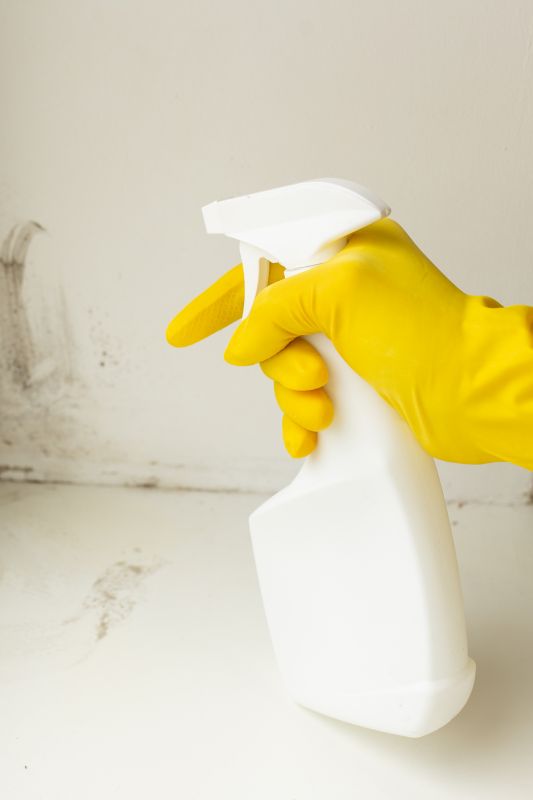Leading Black Mold Removal Solutions For a Cleaner, Safer Space
Explore proven products that target black mold effectively while ensuring your home remains healthy and mold-free.
 Black mold can pose health concerns and damage to indoor environments if not addressed properly. Selecting the right products for black mold removal is essential for effective and safe remediation. There are various options available, including chemical cleaners, specialized sprays, and professional-grade solutions designed to target mold growth at its source. Understanding the different product types and their appropriate applications can help you choose the most suitable solution for your specific situation.
Black mold can pose health concerns and damage to indoor environments if not addressed properly. Selecting the right products for black mold removal is essential for effective and safe remediation. There are various options available, including chemical cleaners, specialized sprays, and professional-grade solutions designed to target mold growth at its source. Understanding the different product types and their appropriate applications can help you choose the most suitable solution for your specific situation.
Top Overall Option
Comprehensive Mold Remediation Kit
A comprehensive mold remediation kit typically includes a variety of cleaning solutions, applicators, and protective gear designed to tackle black mold effectively. These kits provide all-in-one solutions suitable for various surfaces and mold severity levels, making them a versatile choice for homeowners and professionals alike. They often contain surface cleaners, deep-penetrating sprays, and safety equipment to ensure thorough and safe removal processes.
Types of Products For Black Mold Removals
Mold and Mildew Cleaners
Specialized cleaning solutions formulated to remove mold and mildew from non-porous surfaces like tiles, glass, and sealed wood.
Anti-Mold Sprays
Sprays designed to treat affected areas and inhibit future mold growth when applied regularly.
Bleach-Based Solutions
Common household bleach diluted for mold cleaning, effective on non-porous surfaces but requiring careful handling.
Hydrogen Peroxide Solutions
Oxidizing agents that can help eliminate mold spores and are often used in natural mold removal methods.
Mold-Resistant Paints and Coatings
Surface coatings that create a barrier to prevent mold growth on walls and ceilings after cleaning.
Deep-Penetrating Mold Removers
Products formulated to reach into porous materials like drywall and wood to eliminate hidden mold colonies.
HEPA Vacuum Attachments
Vacuum accessories equipped with HEPA filters to safely remove mold spores from surfaces and the air.
Mold Removal Foams
Foam-based solutions that cling to surfaces for extended contact, aiding in mold eradication on irregular surfaces.
Biological Mold Cleaners
Enzymatic or microbial solutions that naturally break down mold without harsh chemicals.
Sealants and Barriers
Products used to seal porous surfaces after cleaning to prevent mold recurrence.
Popular Choices
Versatile cleaning products suitable for various surfaces and mold levels, often favored for their ease of use.
Convenient sprays that can be applied directly to affected areas for quick treatment.
Powerful solutions designed for severe mold infestations, often used in professional settings.
Protective coatings applied after cleaning to create a mold-resistant barrier.
Products made with natural ingredients like vinegar or baking soda, popular among those seeking chemical alternatives.
Strong disinfectants used in commercial or heavily affected areas for thorough mold removal.
Products that help eliminate mold-related musty odors after cleaning.
Test kits that help identify mold presence and guide treatment decisions.
Complete PPE kits including masks, gloves, and goggles for safe mold removal.
Specialized products for cleaning and treating mold inside heating, ventilation, and air conditioning systems.
Solutions formulated to treat porous materials like drywall, wood, and fabric surfaces.
Products designed to be applied after cleaning to inhibit future mold growth.
Effective black mold removal often involves thorough cleaning combined with preventive measures to inhibit future growth. Many products are formulated to penetrate porous materials like drywall, wood, and textiles, helping to eliminate mold spores embedded within these surfaces. When choosing a product, consider the severity of the mold problem, the type of surface affected, and any safety precautions necessary during application.
It's important to follow manufacturer instructions carefully to ensure safe and effective use. Some products may require protective gear such as gloves and masks, especially in cases of extensive mold contamination. While chemical-based solutions are common, there are also options that focus on surface treatments and preventative coatings. Regular maintenance and prompt cleaning can help mitigate mold recurrence, preserving indoor air quality and structural integrity.
In addition to cleaning products, consider tools and accessories that facilitate mold removal, such as scrub brushes, spray bottles, and protective gear. Combining the right products with proper techniques can make the process smoother and more efficient. Always prioritize safety and environmental considerations when selecting products, and consult professionals if the mold problem is extensive or persistent.
Key Buying Considerations
- Identify the severity of the mold problem to select an appropriate product strength.
- Determine the surface type affected to choose compatible cleaning solutions.
- Check for product safety instructions and required protective gear during application.
- Consider whether the product is suitable for porous or non-porous surfaces.
- Evaluate the ease of application, such as spray, foam, or wipe-on formats.
- Look for products that offer residual protection against future mold growth.
- Assess if the product contains harsh chemicals and if natural alternatives are preferred.
- Review the drying and curing time for the product to ensure proper application.
- Consider whether additional tools like scrub brushes or vacuums are needed for effective removal.
- Verify if the product is compatible with existing paints or coatings to prevent surface damage.
- Review user feedback and ratings for insights into product performance.
- Check for any ventilation or safety precautions to ensure a safe cleaning process.
- Determine if the product is suitable for use in occupied spaces or requires evacuation.
- Assess the cost-to-benefit ratio based on the size of the affected area.
- Ensure the product provides clear instructions for use and disposal.
